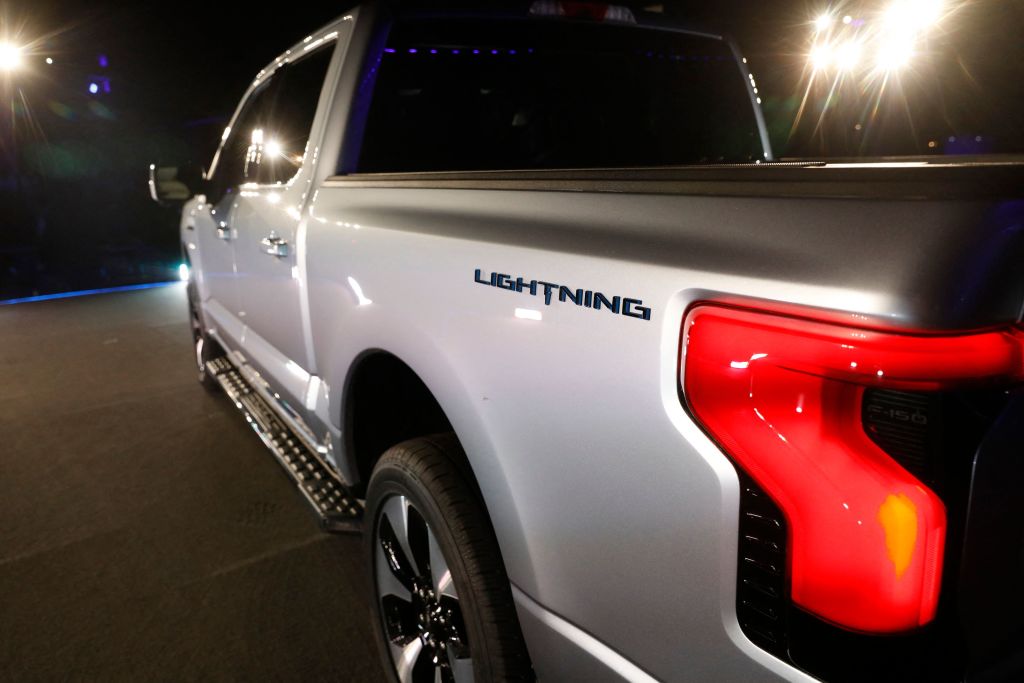Listen to certain people and electric vehicles come across like magical unicorns that run on fairy dust and can do anything you want them to — including powering your house.
President Joe Biden certainly thinks so. In November, giving one of his numerous interminable speeches about infrastructure, he told America that your Tesla or Chevy Bolt could keep the electricity on in your home.
“And by the way, in your home, you know, the batteries that we have now — and they’re getting more and more sophisticated,” Biden said.
“You know, a lightning storm takes out all the electricity in the house. Guess what? You can plug your car into the house and make it light up.”
After the audience laughed: “You think I’m joking? It’s a little simplistic, but literally you can. Literally you can.”
[firefly_embed]
[/firefly_embed]
Now, usually, when the words “literally” or “no joke” are involved in any statement of fact by one Joseph Robinette Biden, it should not be treated literally, but instead as a joke.
This time, however, it’s kind of true — provided you have some very deep pockets.
Automotive magazine MotorTrend, which is doing a long-term driving test on Ford’s F-150 Lightning EV, ran the numbers about what it could cost to use the truck to power your home.
Long story short, you could probably buy another car with the nearly $18,000 it could take to get the system installed.
For the vehicle to provide backup power, you need the Ford Charge Station Pro, which gives you the bidirectional capability to either provide Level 2 quick charging for your car or to let your charged car power your home.
However, MotorTrend’s Christian Seabaugh wrote in a piece published last month that the process “isn’t as easy as it seems. Poor communication and an eye-watering $18,000 estimate have cooled us on what promises to be the next frontier in EV technology.”
The charger is built in conjunction with Sunrun, a major player in the solar energy industry. The basic idea is that you can either use the Lightning to power your home during outages or as “virtual powerplants” to sell energy back to the wider grid when electricity is in high demand.
“If this all sounds like it has the potential to be hideously expensive or complex, you’d be correct,” Seabaugh wrote.
“Early reports from Lightning customers online hinted as much, and soon after our Lightning arrived, I reached out to Sunrun to see how much it would cost to install Ford’s Charge Station Pro and the Home Integration System in my home — a fairly typical 1950s single-family structure with a detached garage,” he said.
And boy, do the costs add up quickly.
First, there’s the base Charge Station Pro, which costs $1,650 to install, according to a quote from Sunrun. Then there’s the Home Integration System. It adds up to $9,400.
But, Seabaugh said, the Sunrun representative said “neither cost would include any necessary home upgrades, such as an upgraded electrical panel — something I would surely need considering I have a common 100-amp electrical panel and the Lightning’s charger draws up to 80 amps. A home inspection would determine what upgrades I’d need and my true cost.”
After an inspection and numerous delays, Seabaugh found that the charging capability would cost quite a bit more than just installing the Charge Station Pro and the Home Integration System.
“For an extra $7,940, Sunrun would upgrade my 100-amp panel to an unspecified amperage ($5,500), relocate some circuits ($840), and do some ‘Other Work’ ($1,600—yes, really, ‘Other Work’ is all the detail Sunrun gave),” he wrote.
“The document also notes, ‘Additional work (which does not fall within the scope of this document) is also required. This work is listed in the Customer Managed Scope of Work document,'” Seabaugh said.
In total, Sunrun gave him “an estimate of at least $17,340 to give our $80,889 Lightning the ability to power my home in an emergency.”
Literally, folks. No joke.
Just to put this in perspective, the cheapest Ford on sale is the Maverick compact pickup, which starts at $19,995, according to CarHP. That’s about as much as it would take for the F-150 Lightning to charge your house.
Now, is the F-150 Lightning a cooler truck than the Maverick? Yes, in italics. Is it a fun toy? Absolutely. Is its bidirectional home charger a cool gizmo? Totally.
But those are the key words: Toy. Gizmo. Cool. The issue is the cool $100,000 this will cost some people.
If you can shell it out, that’s great.
The problem is, politicians are desperate to force you to convert to EVs — and even if they don’t make you get bidirectional charging for your house (yet, anyway), electric vehicles are still far more expensive and impractical than internal combustion vehicles for the vast majority of drivers.
From range issues to concerns with how the vehicles perform in cold conditions to numerous quality-control hiccups along the way — particularly from Ford, which is suffering a public relations fallout from a spate of reliability issues across the board of late — electric vehicles aren’t going to replace gas-powered cars anytime soon, no matter how hard the Democrats try to push fairy dust-powered unicorns on cash-strapped American drivers.
CLARIFICATION, Feb. 27, 2023: In a Feb. 24 letter to The Western Journal, Wyatt Semanek, senior manager of corporate communications for Sunrun, said some of the language in the original version of this article “could potentially mislead readers” about the cost of his company’s home charging system. He said “installation pricing of the entire bidirectional system will be unique for almost every home. Homes are in different conditions, have different panels, etc. The MotorTrend quote is unique to that customer with a specific set of circumstances that influence pricing. Not every home will be that way.” This article and its headline have been revised to make that clear.
This article appeared originally on The Western Journal.

























 Continue with Google
Continue with Google